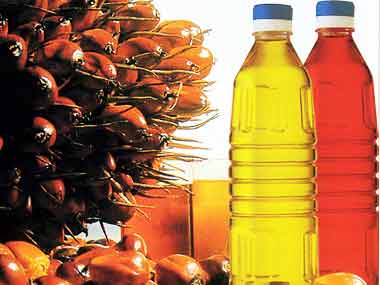
The increase in prices of palm oil or palm fatty acids (PFAD) – a key input used in making soaps – is seen as a blessing in disguise for listed fast-moving consumer goods (FMCG) companies. Typically, price hikes led by input-cost inflation tend to hurt demand. However, that’s not be the case this time. PFAD prices rose 13 per cent in February this year on a month-on-month basis. This will necessitate price hikes in soaps in the coming months or reduction in excessive promotional activity levels in the segment, which could edge out smaller unorganised players.
“We expect promotions in the soaps segment to unwind given high inflation in PFAD over the past few months,” say analysts at Kotak Institutional Equities in a report.
Hindustan Unilever (HUL), Godrej Consumer Products (GCPL) and Jyothy Laboratories, which have a meaningful presence in the soaps segment, will benefit from these developments unless PFAD prices surge significantly from hereon.
Rising input costs will enable these companies reverse the price deflation particularly in the soaps business. Historically, periods of weakening PFAD prices are accompanied with intensified competition from smaller, unorganised players. This, in turn, forces the organised players as well to cut product prices and protect their market shares. This theory played out in the past few quarters as well.
HUL’s soaps and detergents revenues put up a weak show in the past three quarters (ending December 2015) and fell 0.1 per cent to 1.6 per cent due to continued price deflation. Prior to this, the segment was growing at a healthy clip of five per cent on a year-on-year basis. Similarly, Jyothy’s soaps and detergent revenue growth came down from 8.2 per cent in the June 2015 quarter to 3.8 per cent in the December 2015 quarter. For GCPL, too, this metric has come off from 13 per cent to two per cent in the said period.

Both HUL (46 per cent) and Jyothy (75 per cent) derive a significant chunk of their revenues from the soaps and detergents segments. For GCPL, soaps form about 30 per cent of its domestic revenues. Unlike HUL and GCPL, detergents form a major pie of Jyothy’s soaps and detergents segment revenues. Though ITC, too, is present in the soaps business, it is too small to have a meaningful impact on the company’s financials.
The improvement in realisations, though, will be at a gradual pace. This is because when compared to February 2015 levels, PFAD prices are still down 12 per cent.
Rakshit Ranjan, FMCG analyst at Ambit Capital, says, “Most FMCG companies have cut prices sharply since August 2015. So, till August this year, realisations will reflect a declining trend on a year-on-year basis and the impact of price hikes will be visible only after August.” While price hikes will restrict the fall in segment margins, overall earnings before interest, taxes, depreciation and amortisation (Ebitda) will move in tandem with other input costs, advertising spends, etc. Analysts believe FMCG companies’ Ebitda margins could continue to gain from input cost tailwinds in the coming two quarters as well before starting to reverse.
[“source-Business-standard”]





